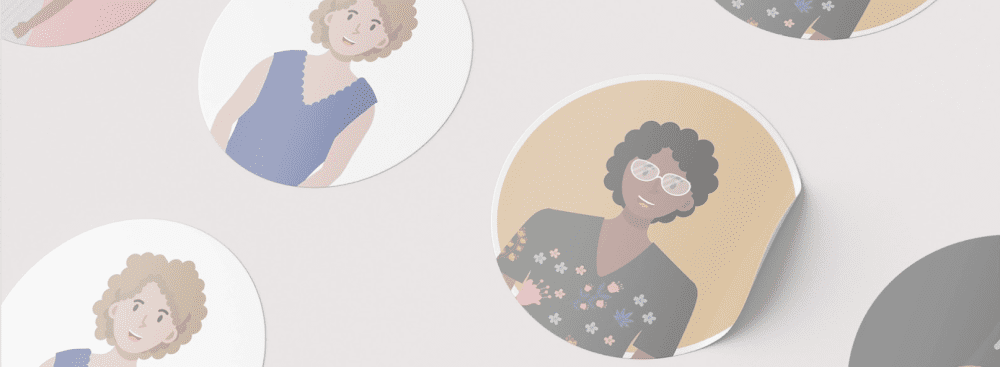Designing Freedom: A Journey from Constraint to Creative Innovation

Designing Freedom:
A Journey from Constraint to Creative Innovation
Story curated by Samira ShiriDevich & Sabri Gokmen (COAA)
– Samira ShiriDevich
Samira’s story begins with a personal revolution— a courageous leap from the restrictive environment of Iran to the creative promise of the United States.
Growing up amid rigid cultural norms and strict limitations on women’s self-expression, she sought refuge in art. Educated in Tehran with a master’s degree in arts, Samira knew early on that design was not only her passion but a potent tool to voice change. Upon arriving in the U.S., she pursued an MFA in Design and Visual Communication with the intent of moving into teaching. Her transition also marked a shift in practice: leaving behind the client-commissioned commercial work of her homeland, she embraced community-based, Participatory, Horizontal design. By working closely with nonprofit organizations and local communities, she learned that true creative innovation is built on empathy and genuine engagement with users—a lesson that would later infuse her professional and academic endeavors.
Discovering AI’s Potential
As she settled into her new creative life, Samira’s first brush with artificial intelligence came in a surprisingly organic way. Initially, she used ChatGPT to help refine her English—her second language—by checking grammar and offering quick answers to casual queries. This low-stakes experimentation soon morphed into a fervent curiosity about AI’s role in creativity. “I started asking what might seem like nonsense questions, and suddenly, I was seeing a spark of inspiration in every response,” she recalls. Tools like Dall-e and MidJourney opened up entirely new realms for visual ideation, providing immediate visual inspiration and pushing her to explore designs that were previously unimaginable. Though she hesitated to fully incorporate AI into her academic work due to unclear policies, her initial encounters set the stage for a dynamic exploration of digital tools that would challenge and expand her creative process.
Merging History and Technology
With her growing confidence in using AI, Samira embarked on a groundbreaking multi-media project that would redefine the boundaries of art and storytelling. Funded by a grant, she worked on an exhibit celebrating the 60th anniversary of her department. In a bold blend of tradition and technology, she developed an immersive augmented reality installation. The project centered around a visual timeline that reimagined decades of artistic evolution, combining historic images with AI-generated narratives. Samira ingeniously generated text descriptions for each era and collaborated with a renowned art historian – Jim Frakes; she had him record his reading of the script to train his voice as an AI, turning static content into a dynamic narrative. Visitors could experience the timeline by scanning each image on the timeline, seamlessly integrating digital storytelling into the physical exhibit. This interaction enabled audiences to access layered content, merging historical context with modern technology and creating a multisensory journey through art and time.
Empowering Future Creators
Teaching remains at the core of Samira’s passion. In her classroom, she is redefining design education by blending foundational techniques with advanced digital tools. She encourages her students to view AI as a facilitator rather than a shortcut—a means to refine ideas and push creative boundaries. In courses such as UX/UI design, she allows her students the freedom to use AI for generating text, images, and icons, thereby freeing their time to concentrate on critical aspects like usability and user interaction. Samira also notes that even industry-standard tools have evolved; Adobe’s integration of AI within its suite of applications is a testament to technology’s permanence. With features embedded in Photoshop and Illustrator, AI is clearly here to stay, catalyzing a new era where creative workflows are faster. This hands-on approach not only nurtures her students’ technical skills but also cultivates a spirit of experimentation and resilience. As she puts it, “AI offers us a leg up in speed and innovation, but it’s our unique perspectives that turn these ideas into art.”
A Vision for Collaborative Innovation
Looking ahead, Samira envisions a future where artificial intelligence will become an essential and collaborative partner in the creative process. While AI can streamline production and inspire fresh directions, she remains convinced that human ingenuity is the soul of truly impactful design. For her, AI’s promise lies in accelerating workflows without supplanting the creative spark that defines great art. As industry demands continue to evolve, Samira is dedicated to equipping her students with both the technical skills and a robust ethical framework necessary to navigate this shifting landscape. In her classroom, she is actively developing clear policies for the ethical and responsible use of AI, ensuring that the integration of advanced tools supports learning while upholding academic integrity. Although she acknowledges potential challenges—such as job displacement and ethical dilemmas in content creation—Samira is confident that with proactive education and well-crafted guidelines, the synergy between human and machine can be both transformational and empowering.
Story curated by Samira ShiriDevich & Sabri Gokmen (COAA)
Text and Conversations edited using AI.